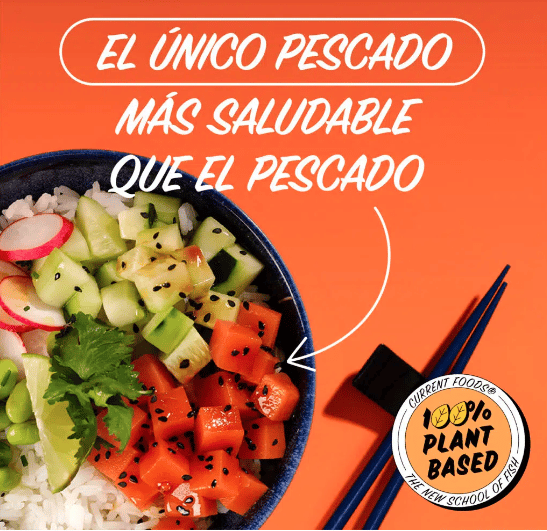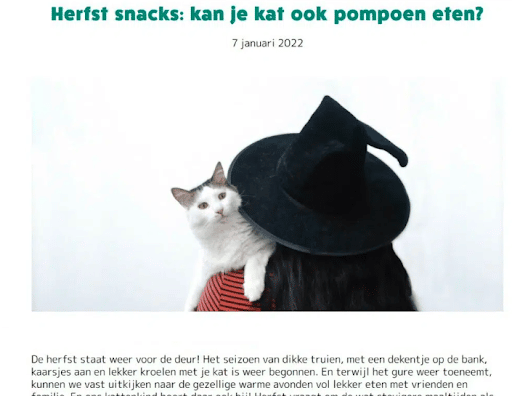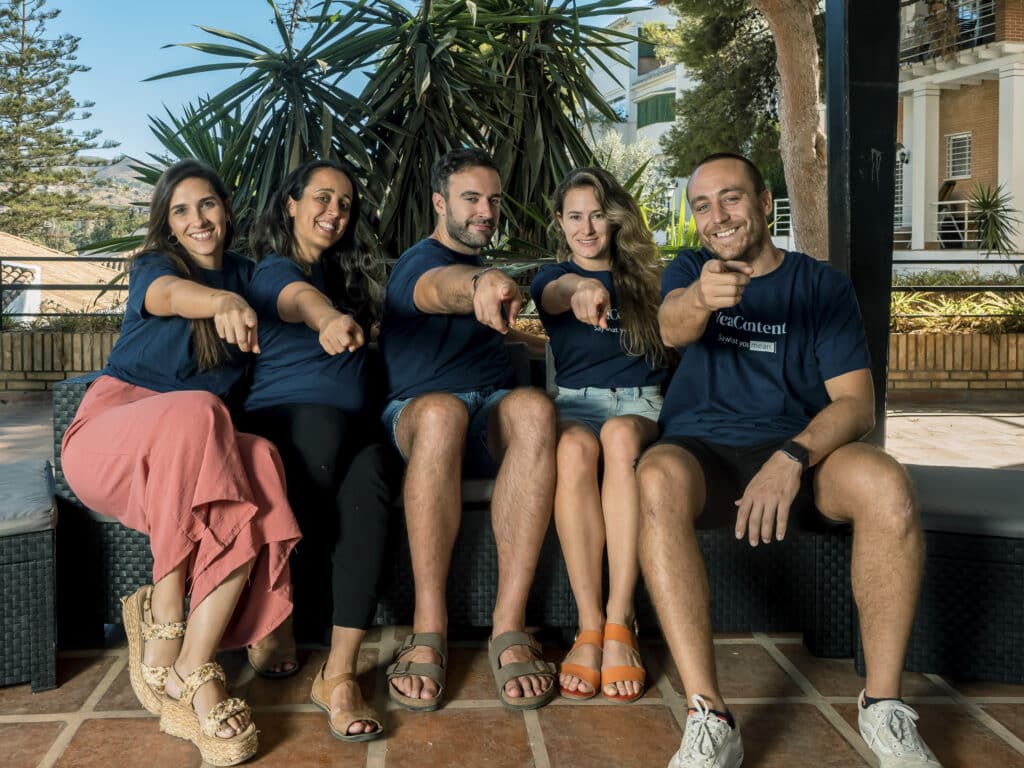If you want to reach global audiences on a personal level, it’s worth localizing your marketing content into different languages. But you should know that marketing content translation requires a unique set of skills to effectively adapt your brand’s core messaging, images and strategy.
Keep reading for 10 tips to ensure your marketing content is successfully tailored for audiences around the world—plus a few examples of work we’ve done for our clients.
See also: Marketing translation: Engaging audiences in their own language
How marketing content translation can benefit your business
When you translate your marketing content, you open up your business to a whole new audience. Not only can you reach more people, but you can also create a more personal connection with them.
Effective marketing is all about getting your audience to feel something. You do that by creating content that triggers emotion—whether that’s tugging on their heartstrings, making them laugh or tapping into a pain point. When your audience feels something from your marketing, they’ll remember your brand.
Language also triggers emotion. When you talk to your audience in their native language, using local references, idioms, stories and slang, you have a far better chance of connecting with them than through standardized marketing. This is because you’re showing them that you care about communicating with them on a personal level.
Another benefit is improving your international SEO. When you have translated versions of your content, search engines will be able to index and rank them accordingly—which can lead to higher traffic levels and improved SEO results.
See also: Marketing localization: Why investing in quality pays off
Download our interactive worksheet for adapting your content strategy to local markets:

10 top tips for quality marketing content translation
For brands looking to go multilingual, it’s important to understand what it takes to effectively translate your content.
For starters, marketing content translation requires extensive background information to be able to convey the same message in the target language. Plus, there’s more room for translators to get creative, as adapting marketing content calls for more nuanced adjustments—including translating humor, play-on-words and cultural references.
See also: Best global multilingual marketing advice you’ll hear in 2023
Here are 10 tips for producing high-quality marketing content translation projects:
1. Analyze the meaning of the original content
The first step for any marketing translation project is to analyze the meaning and purpose of the source text. It’s important to understand the context of both the original and adapted content.
“When we’re translating, we have to think about the repercussions of the text, what its purpose is and who it’s for. There’s a lot of power in that.”
– Meag Gardner, creative translator
Ask why this content needs to be translated and what it’s intended for. Then, make sure you understand the subject matter and have enough background knowledge to understand any industry-specific terms in the intended market.
See also: Audiovisual translation: How VeraContent approaches video translation
2. Understand your target audience
Before starting to translate any piece of content marketing, you also need to understand who it’s intended for. Each audience is different and requires a unique approach. You need to understand their culture and market as a whole, as they may differ from your primary market in significant ways, especially when it comes to referencing trends, holidays, celebrities, current events and values.
Here’s an example of localized content for US plant-based food company, Current Foods, that we did when the brand launched into Spain in early 2022. Since plant-based foods is a relatively new trend in the market, we had to play around with different forms of messaging to see what resonated most with the audience.

See also: International audience research methods: How to reach new markets
3. Define the intended style and tone
Style and tone is such an important element to getting any text-based marketing right. And it’s just as essential in the translation of marketing content. You can’t assume that the style and tone of the intended text should be the same as the original text, as each audience is unique.
This can even go as far as adapting the tone for content in the same language but for different regions. For example, while all countries in the DACH region, including Germany, Austria and Switzerland, speak German, you still need to consider regional varieties and different ways of saying things.
See also: US vs. German marketing content: Why localization is key
Style and tone is particularly important when translating highly creative content like song lyrics. When our team translated well-known Argentine artist Nathy Peluso’s single, Emergencia, into English, we spent a great deal of time ensuring that the artist’s unique style and tone carried across into the translation. Because, without it, the song wouldn’t carry the same meaning.
Read the full client story here.
4. Localize the content
Content localization involves adapting your content to be more relevant to local audiences. This includes considering all nuances, cultural differences, preferences, references, symbols, currencies and current trends in each of your target markets. It also means choosing the right platform to reach them.
Localization ensures that your messaging still conveys the same meaning and conjures similar emotions for a region-specific audience. It’s also important to ensure that relevant references are used.
For example, when we translated a blog post for petcare brand, Sanicat, explaining whether or not eating pumpkin is good for your cat, we had to adjust it slightly in the Dutch version. Since pumpkin is not a popular vegetable in The Netherlands, we included other types of vegetables that are more commonly consumed there.

See also: 5 ways to ensure a quality language localization
5. Outsource local knowledge
It’s essential to consult a local when marketing in unfamiliar regions. This is relevant when putting your global marketing strategy together, as well as on each translation project. A local knows the audience inside-out and will be able to quickly tell you if something doesn’t make sense or offer a better way to say something.
See also: Native language marketing: The benefits of local knowledge
6. Edit, then edit again
Marketing translation projects need more than one set of eyes on them. Ideally, each piece of translated content should go through two editing processes:
- First you need to edit for accuracy and relevancy and check that the brief was followed.
- Then you need to edit for tone, grammar, style, etc.
The first step can be performed by a local to ensure that the translated content makes sense for the region. The second edit should be done by a professional editor. If you only have one resource dedicated to editing, then it’s important for them to remember the two steps in the process.
“Those are the two steps that are essential and anything above that is the gravy.”
– Shaheen Samavati, VeraContent CEO
7. Be aware of any design limitations
When translating content for graphics, you need to consider any design limitations. For example, it’s common that text lengths vary in different languages. Depending on the design, you may need to ensure the translated copy features a similar character count as the original copy, or leave enough space for a language that requires longer sentences.
To give you an idea, think about the length of English vs. Dutch sentences and how much space they take up on an image.
Translators, editors and designers should be in contact throughout the workflow to ensure the translated copy and design works well together.
See also: Multilingual graphic design: Why it pays to hire specialists


8. Don’t forget to localize your SEO keywords
Multilingual SEO is a whole different ball game. You can’t just translate your keywords from your primary market and hope for the best. People search for things differently in each county, so it’s important to research region-specific keywords to incorporate into your SEO content.
See also: 5 best practices to improve your multilingual website SEO
9. Translation technology is necessary, and so are humans
We’ve all seen our fair share of hilarious, awkward or incomprehensible Google-translated text. But automated translation tools still have their place.
If you have large amounts of texts, it’s fundamental to use an automated translation tool to get the project started and ensure consistency. A professional should then edit the translated text and add in localized elements.
Another great feature that many CAT tools offer is the translation memory function. You can store a database of all approved translations for your projects, eliminating the need to translate the same text multiple times. It also helps to retain consistency in style and tone when working on translations for the same brand.
“We should be using these tools to the best of our abilities to be better translators and more efficient and consistent in our work.”
– Meag Gardner, creative translator
10. Leave enough time
Marketing content translation takes time, especially when first starting out. Creative copy tends to be more nuanced and open to cultural interpretation, which means it can take a while to get to the final product.
Keep in mind that slogans and snappy copy are often the trickiest pieces of content to translate. It’s hard to land on a slogan or play-on-words that make sense in all regions, so you’ll often have to adapt them in each market.
For example, in 2016, Coca-Cola launched a global campaign with the slogan “Taste the Feeling.” But as you can imagine, that’s a hard slogan to translate—it’s tricky to even explain the concept in English. When translating the slogan, they had to get creative.
So, when adapting the slogan for its Spanish market, they went with “Siente el Sabor” – which actually means feel the taste.

Get some help from professionals

Translating marketing content isn’t as simple as many other types of translation. The key to successfully going multilingual with your marketing is localization and transcreation.
At VeraContent, we’re a creative translation agency specializing in global social media, multilingual content creation, marketing translation and graphic design localization. We work with locals and native speakers in each region to ensure that your content is not only translated well but makes an impact on global audiences.
Get in touch with us to find out if you qualify for a free content consultation!

